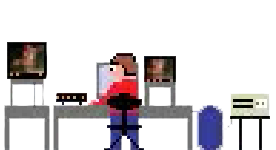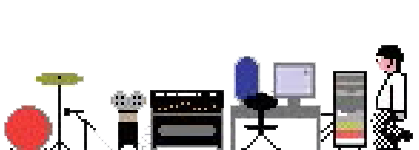I collected and developed vocal and “organic” sounds for over a decade for eventual inclusion in a vocalization etude or creature feature. Rally, in which those materials finally found a home, is an exploration of the relationship between human, animal, and synthetic vocalizations—ranging in scope from large crowd or herd scenes to “inside-the-throat” close-ups—and an attempt at a kind of sonic creature design. Pitch, cadence and vowel formant information, derived from a number of speakers, animals, and even “vocal-sounding” organic or inanimate objects, are used to drive various synthesis and re-synthesis processes. For example, a human being’s vowel formants filter the already vaguely speech-like sound of crushed seaweed; the air in the voice is extracted and cross-synthesized with a pig; pitch-detection extracts one voice’s “melodic” component which is then used to control the granulation parameters of another voice. Among the human beings whose voices were analyzed for this piece are: Noam Chomsky, Harry Partch, Henry Cowell, Langston Hughes, William Carlos Williams, and a feisty southern televangelist. Chris Mercer’s most recent electroacoustic music and research have focused on animal communication, especially nonhuman primate vocalization, including research residencies at the Duke University Lemur Center, the Wisconsin National Primate Research Center, and the Brookfield Zoo. His instrumental music involves modified conventional instruments, found objects, and instruments of the composer’s own design, in combination with amplification, live electronics, and spatialization. He currently teaches music technology in the composition program at Northwestern University.






